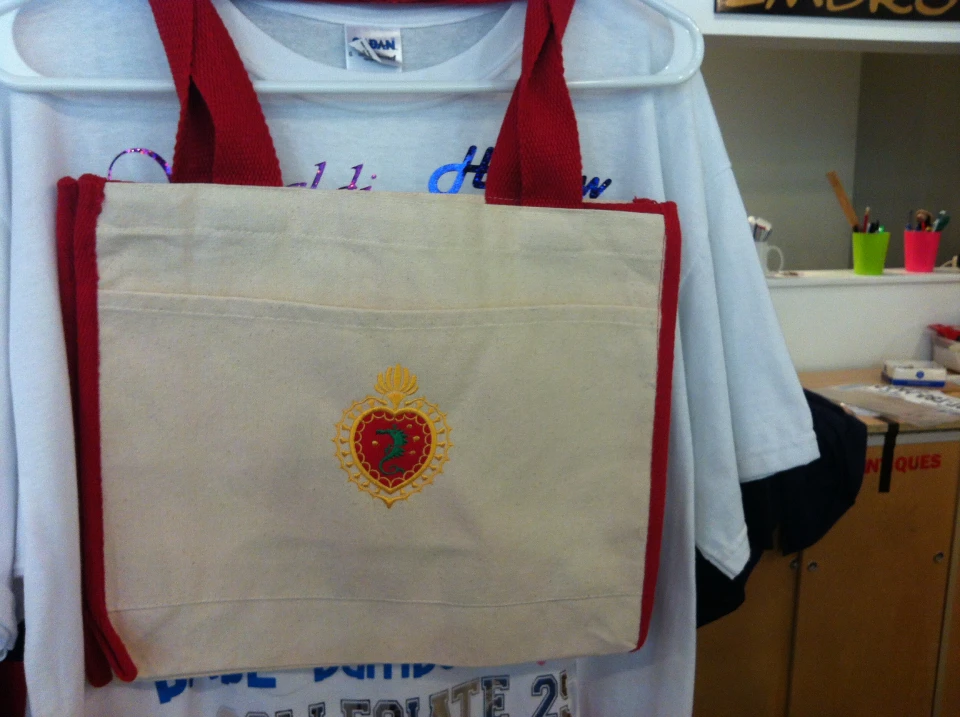Custom-made Embroidery for All Your Requirements - From School Uniforms to Sports Teams
Custom-made Embroidery for All Your Requirements - From School Uniforms to Sports Teams
Blog Article
The Art of Custom-made Needlework: Opening the Tricks to Creating Distinct and Unforgettable Layouts
Embroidery, a craft steeped in custom and creativity, holds within its elaborate stitches the power to transform fabric into a canvas of unique expression. The secrets to creating custom needlework layouts that astound the eye and leave a lasting impact hinge on a fragile balance of technique, imagination, and attention to detail. As we dive right into the globe of customized embroidery, we uncover the nuanced interaction in between thread selection, sew intricacy, and style personalization that elevates a plain garment to a masterpiece. Join us on a journey through the art of custom needlework as we unwind the secrets behind crafting truly remarkable and distinct developments.
Picking the Right Embroidery Threads
When selecting embroidery threads, what crucial factors should you consider to make sure the very best outcomes for your custom styles? The option of needlework thread is vital in establishing the last outcome of your embroidered design. One of the main considerations is the material of the thread. Different materials such as cotton, polyester, rayon, and silk use differing levels of sheen, sturdiness, and structure. It is necessary to pick a string product that enhances the textile you are stitching on and straightens with the wanted appearance of the design.
Thicker threads can include measurement and appearance to your style, while finer strings are ideal for complex details and tiny text. In addition, considering the shade fastness and washability of the thread is critical to guarantee that your personalized styles keep their quality and vibrancy over time.
Discovering Different Stitch Techniques
To dig right into the world of 'Discovering Different Stitch Strategies', one should comprehend the complexities and subtleties that each sewing method gives the art of needlework. Various stitch techniques not just include visual rate of interest yet also contribute to the total appearance and dimension of the style. One preferred stitch technique is the satin stitch, which involves carefully packed parallel stitches to create a smooth and shiny surface area, perfect for completing shapes and producing vibrant lays out.
On the other hand, the backstitch is a flexible method usually utilized for detailing and adding fine details. It includes sewing backwards to develop a strong line of needlework. In addition, the French knot stitch includes a responsive component to styles, best for developing distinctive accents like flower facilities or ornamental touches.
Checking out various stitch techniques enables embroiderers to have fun with light, darkness, and deepness within their designs, raising the aesthetic appeal and artistic high quality of their embroidery projects. By mastering different stitching methods, one can unlock endless possibilities for creating unique and memorable customized embroidery pieces.
Incorporating Personalized Layout Aspects
Having explored the details of various stitch techniques such as the satin stitch, backstitch, and French knot, the emphasis now moves towards including customized layout aspects in personalized embroidery tasks. Customized design components play an essential duty in making embroidery tasks truly special and memorable.
One more way to integrate tailored design aspects is by informative post consisting of signs or concepts that hold special significance to the recipient or Visit Website mirror their rate of interests and individuality. Including a favorite flower, pet, or hobby-related icon can make the embroidery design a lot more purposeful and personalized. Furthermore, selecting shades that reverberate with the recipient or line up with the intended motif can even more boost the customization of the embroidery task.
Understanding the Art of Color Coordination
One trick aspect of color control is understanding color concept. This consists of knowing just how different shades connect with each other, the emotions they communicate, and just how they can be combined to create visually attractive layouts. By using color theory principles, embroiderers can produce unified shade schemes that boost the overall look of the style.
Furthermore, taking note of comparison is important in shade control. Making use of contrasting shades can aid certain components of the layout pop, boost legibility, and create a visually dynamic embroidery piece. By mastering the art of color coordination, embroiderers can elevate their designs and create memorable pieces that resonate with clients and audiences alike.
Enhancing Structure With Advanced Embroidery Stitches

French knots, for instance, are best for including little, increased dots to your style, simulating the appearance of grains or producing a textured surface. Bullion knots, on the her explanation other hand, can be used to create twisted, ropelike elements that include an elegant feeling to the embroidery. Seed stitching includes little, scattered stitches that can fill out locations with a speckled appearance, while turkey job develops cosy, dimensional accents similar to animal fur or vegetation. Try out these innovative needlework stitches enables you to push the boundaries of typical needlework and produce really unique and aesthetically enticing structures in your designs.
Conclusion
In verdict, the art of customized needlework includes a combination of selecting the right strings, exploring numerous stitch methods, including tailored layout elements, understanding color control, and enhancing appearance with advanced stitches. By recognizing and executing these vital elements, embroiderers can produce unique and unforgettable layouts that showcase their creative thinking and skill. Needlework enthusiasts can open the keys to creating attractive and bespoke pieces that attract attention and leave a lasting impact.
Report this page